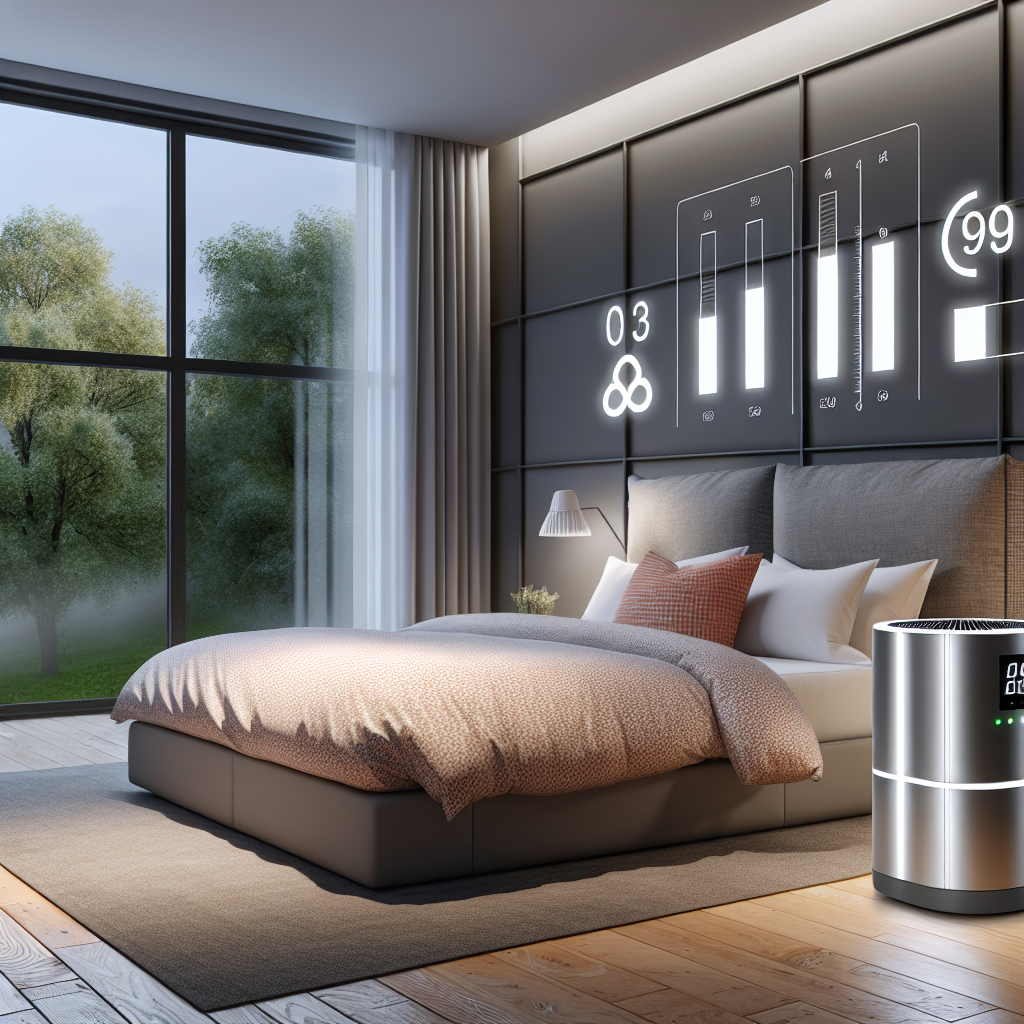Temperature Regulation Technology Review: Enhancing Sleep for Optimal Rest
Introduction: The Importance of Sleep Temperature Control
Getting a good night’s sleep is essential for overall health and well-being, but many people struggle with temperature-related sleep disturbances. Whether it’s overheating or feeling too cold, an uncomfortable temperature can lead to restless nights and fragmented sleep cycles. Temperature regulation is a crucial factor in sleep hygiene, influencing how quickly you fall asleep, the duration of deep sleep stages, and overall sleep quality.
In recent years, innovations in temperature regulation technology have transformed the sleep industry. From smart mattresses and cooling pillows to advanced wearable devices, these solutions aim to create an optimal sleep environment tailored to individual needs. Research has shown that the ideal sleep temperature ranges between 60 to 67 degrees Fahrenheit (15-19 degrees Celsius), but achieving this can be difficult due to seasonal changes, room conditions, and personal body temperature variations.
Traditional methods like fans, air conditioning, and heated blankets often provide inconsistent results. Additionally, these solutions may not always be energy-efficient or tailored to specific sleep needs. In response, temperature regulation technologies—such as phase-change materials (PCMs), active cooling and heating systems, and moisture-wicking fabrics—have been developed to address these challenges effectively.
These cutting-edge sleep solutions focus on adjusting body temperature dynamically throughout the night, ensuring that sleepers remain comfortable without frequent awakenings. Many of these technologies integrate with smart home systems, providing seamless and automated temperature adjustment capabilities. With ongoing advancements, sleep technology is becoming more personalized and efficient, helping people of all ages achieve better sleep quality.
This article will explore the most advanced temperature regulation technologies, examine the scientific research backing their effectiveness, and provide insights into how these innovations can enhance sleep health. Understanding these developments can help individuals make informed decisions when selecting sleep products that cater to their specific needs and preferences.
How Science Supports Temperature Regulation in Sleep
Medical and scientific research has highlighted the importance of temperature regulation in maintaining optimal sleep health. Studies suggest that body temperature naturally drops during the onset of sleep, which signals the production of melatonin—an essential hormone for regulating sleep cycles. Disruptions in this cooling process can hinder deep sleep and lead to frequent night-time awakenings.
One study published in Nature and Science of Sleep explored how temperature regulation affects sleep-wake cycles. Researchers found that maintaining optimal thermal conditions led to longer durations of slow-wave (deep) sleep and improved sleep continuity. Individuals who used temperature-adjusting sleep technologies reported enhanced comfort and fewer disturbances throughout the night. [source]
Innovative Advances in Temperature Regulation Technology
Phase-Change Materials (PCMs): Adaptive Temperature Control
Phase-change materials (PCMs) have become a key innovation in sleep temperature control. These materials absorb heat when temperatures rise and release heat when temperatures drop, creating a balanced sleep environment. A study from the Journal of Physiological Anthropology showed that bedding integrated with PCM technology contributed to more stable skin temperatures, leading to improved sleep outcomes. [source]
Active Cooling & Heating Systems: Precision Temperature Management
Active cooling and heating sleep systems, such as water-based or air-powered mattress toppers, have also shown promising results. Research conducted by the American Academy of Sleep Medicine (AASM) indicated that individuals using active cooling mattress pads experienced fewer wake-ups and entered REM sleep faster than those using traditional bedding. [source] These systems work by circulating cool or warm air under the sleeper, maintaining the desired sleep temperature without affecting ambient room conditions.
Wearable Sleep Technology: Personalized Sleep Comfort
Wearable sleep technology, including smart thermoregulating sleepwear, is an emerging field that utilizes biofeedback sensors to respond to fluctuations in body heat. Researchers at Stanford University have studied the effects of thermoregulatory clothing on sleep quality, finding that targeted cooling around specific body areas, such as the hands and feet, could improve sleep onset and sleep maintenance by increasing temperature neutralization. [source]
Moisture-Wicking Fabrics: Breathable Solutions for Comfortable Sleep
Beyond cooling technology, moisture-wicking fabrics and breathable materials play a significant role in preventing temperature fluctuations during sleep. The Journal of Sports Sciences investigated the effects of temperature-regulating textiles and found that individuals wearing moisture-wicking pajamas experienced less night-time sweating and overall greater comfort compared to those using standard sleepwear. [source]
The Future of Temperature-Regulated Sleep Technology
Taken together, these studies confirm the effectiveness of temperature regulation technology in promoting healthier sleep patterns. With continued innovations in sleep science and material development, individuals now have more options than ever to customize their sleep environments and improve sleep health.
Temperature regulation technology is rapidly transforming how individuals experience sleep, providing innovative solutions to combat overheating, excessive cooling, and night-time discomfort. Scientific research underscores the significance of maintaining an optimal sleep temperature, with studies showing that proper thermal control leads to improved sleep efficiency, enhanced deep sleep, and reduced night-time disturbances.
From phase-change materials and active cooling mattresses to wearable thermoregulating clothing, these advancements offer personalized sleep solutions that adjust in real time. These emerging technologies not only improve the immediate comfort of sleepers but also contribute to long-term health benefits, such as better cognitive function, improved metabolic regulation, and reduced risks of sleep disorders.
As more people recognize the impact of temperature on sleep, investing in temperature regulation sleep technology can be a proactive step toward achieving uninterrupted, high-quality rest. Whether through smart bedding, advanced fabrics, or wearable innovations, optimizing sleep conditions has never been more accessible. Choosing the right sleep technology allows individuals of all ages to experience restful nights and wake up feeling refreshed and rejuvenated.
## References
1. *Nature and Science of Sleep.* Effect of Temperature Regulation on Sleep Quality – [Read More]
2. *Journal of Physiological Anthropology.* The Role of Phase-Change Materials in Sleep Comfort – [Read More]
3. *American Academy of Sleep Medicine (AASM).* Study on Active Cooling Sleep Systems – [Read More]
4. *Stanford Medicine.* The Future of Temperature-Responsive Sleep Wear – [Read More]
5. *Journal of Sports Sciences.* Effectiveness of Temperature-Regulating Textiles – [Read More]
Summary:
This article explores the importance of temperature regulation in achieving optimal sleep quality. It discusses the latest innovations in sleep technology, such as phase-change materials, active cooling and heating systems, wearable devices, and moisture-wicking fabrics, that aim to create a personalized and comfortable sleep environment. The article cites scientific research supporting the effectiveness of these technologies in improving sleep duration, reducing nighttime awakenings, and enhancing overall sleep health. As temperature regulation technology continues to advance, individuals can now invest in tailored solutions to achieve uninterrupted, rejuvenating sleep.

Dominic E. is a passionate filmmaker navigating the exciting intersection of art and science. By day, he delves into the complexities of the human body as a full-time medical writer, meticulously translating intricate medical concepts into accessible and engaging narratives. By night, he explores the boundless realm of cinematic storytelling, crafting narratives that evoke emotion and challenge perspectives.
Film Student and Full-time Medical Writer for ContentVendor.com




